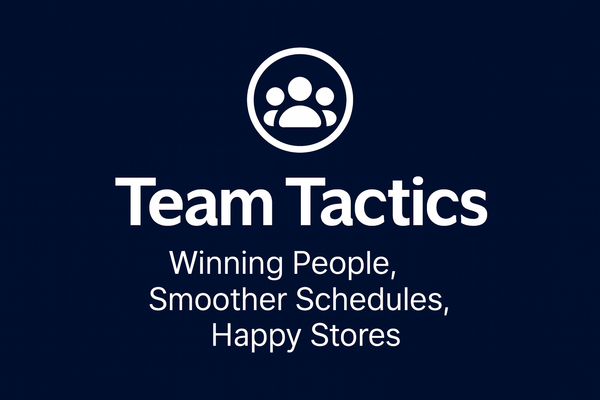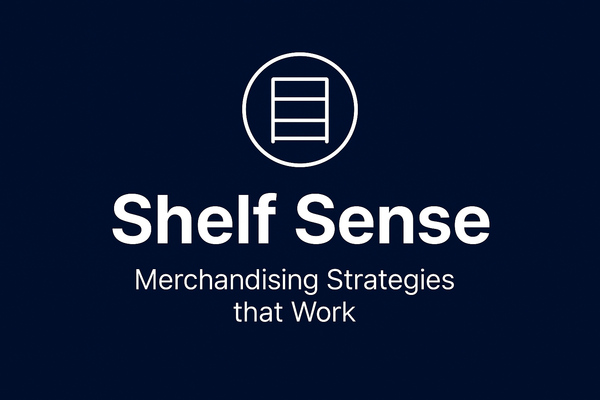Stock Smart: The Assistant Manager's Guide to Inventory That Actually Works
When Jake Morrison became assistant manager at Survival Stop, he thought inventory management meant keeping shelves full. Boy, was he wrong! His first week, they ran out of energy drinks during morning rush and had expired yogurt in the cooler.

When Jake Morrison became assistant manager at Survival Stop, he thought inventory management meant keeping shelves full. Boy, was he wrong! His first week, they ran out of energy drinks during morning rush, had expired yogurt in the cooler, and somehow ordered 200 bags of Halloween candy in February.
"I was flying blind," Jake admits. "I'd order stuff based on gut feelings. Our storage room looked like a tornado hit it, we constantly ran out of popular items, and food waste was through the roof."
Six months later, Jake's store runs like clockwork. Stockouts dropped 73%, food waste decreased 45%, and customer satisfaction jumped 28 points. The secret? He learned inventory management isn't guessing—it's understanding data, building relationships, and creating systems.
Why Inventory Makes or Breaks Your Store
In convenience stores, inventory is everything. Miss having what customers want, and they drive to competitors down the street. Stores with effective inventory management see:
- 15-25% higher gross margins through reduced waste
- 89% fewer customer complaints about stockouts
- 31% faster inventory turnover
- 67% reduction in costly emergency orders
"Before getting serious about inventory, we were hemorrhaging money," explains Maria Santos. "Expired products, emergency deliveries, lost sales from empty shelves—death by a thousand cuts. Strategic inventory management sent our profitability through the roof."
Reading the Data: Your Crystal Ball
Modern POS systems generate mountains of data. Smart assistant managers look beyond yesterday's numbers for patterns: which items sell best Mondays versus Fridays, how weather affects energy drinks, when lunch items peak. This data transforms ordering from guesswork into science.
Weekly trends show bigger patterns daily numbers miss. Seasonal recognition prevents costly mistakes like Jake's Halloween candy disaster.
David Siemer swears by data-driven ordering: "I thought I knew customer preferences from observation. Data showed completely different patterns. Energy drinks peak at 6 AM and 2 PM, not lunch. Adjusting deliveries around actual demand increased energy sales 19%."
Optimal Stock Levels: Finding the Sweet Spot
Safety stock prevents stockouts without waste. Reorder points eliminate guessing when to order. ABC analysis prioritizes inventory—high-value items get daily attention, low-impact items monthly monitoring.
"I treated every product equally, spending as much time on candy as cigarettes," recalls Lisa Carrington. "Prioritizing by profit impact made everything manageable."
Building Supplier Partnerships
Treat vendors as allies, not order-takers. Regular communication identifies new products and supply issues early. Collaborative forecasting means sharing sales data so suppliers optimize your orders.
"My Coca-Cola rep and I review data weekly," explains Carlos Martinez. "She suggested energy drink mix changes based on regional trends. Our energy sales jumped 23%."
Technology That Simplifies
Automated reorder alerts eliminate mental tracking. Mobile apps let managers check stock and place orders anywhere. Forecasting tools combine sales data with weather and events.
"Fancy software doesn't replace judgment," admits Jennifer Park. "Computer says order 50 cases of ice cream, but rain forecast means scaling back. Technology provides foundation, experience still matters."
Perishables: The Ultimate Challenge
FIFO rotation requires constant vigilance. Dynamic pricing moves items before expiration through markdowns and BOGOs. Supplier partnerships optimize delivery frequency.
"Perishables were my nightmare," recalls Amanda Foster, who cut food waste 67%. "Breakthrough came tracking daily sales for every perishable item and adjusting orders weekly instead of monthly."
Seasonal Success Strategies
Pre-season planning starts months ahead—winter items in August, summer products in March. Storage allocation prioritizes which seasonal items deserve prime space. End-of-season clearance prevents inventory buildup.
"I treat seasonal inventory like campaigns with clear beginning, middle, and end," explains Tom Wilson. "Before ordering anything seasonal, I know when I'll promote it, expect peak sales, and clear it out."
Emergency Management
Emergency supplier networks provide backup options. Cross-store coordination balances inventory during shortages. Customer communication during stockouts can strengthen relationships with honest explanations.
"Hurricane season taught me inventory management is crisis management in disguise," shares Roberto Cruz. "When storms hit, you've got 48 hours to stock essentials and secure supply chains."
Training Your Team
Turn every employee into inventory partners. Basic education explains why rotation matters and how stockouts hurt sales. Recognition programs reward spotting issues. Clear procedures eliminate confusion.
"I stopped treating inventory as 'my job' and started treating it as 'our responsibility,'" explains Michelle Miller. "Once everyone understood how inventory affects their work, they became invested in getting it right."
Measuring Success
Track inventory turnover for capital efficiency. Monitor stockout frequency and waste percentages by category. Watch gross margin trends for bottom-line impact.
Future Technology
Predictive analytics uses AI incorporating weather and events. RFID tracking provides real-time visibility. Dynamic pricing automatically adjusts based on inventory levels.
But fundamentals remain: understand customers, track data, build supplier relationships, create adaptive systems.
The Bottom Line
Mastering inventory separates good assistant managers from great ones. It determines whether stores run smoothly or face constant crises, whether margins improve or erode.
"Inventory seemed like the boring part when I started," reflects Sarah Kim, recently promoted to store manager. "Turns out, it's the foundation making everything else possible. When inventory runs smoothly, customer service improves, employee stress decreases, profitability soars."
For assistant managers willing to learn from data and build effective systems, inventory management becomes the pathway to advancement and satisfaction. In convenience stores, managers who control inventory control their destiny.





